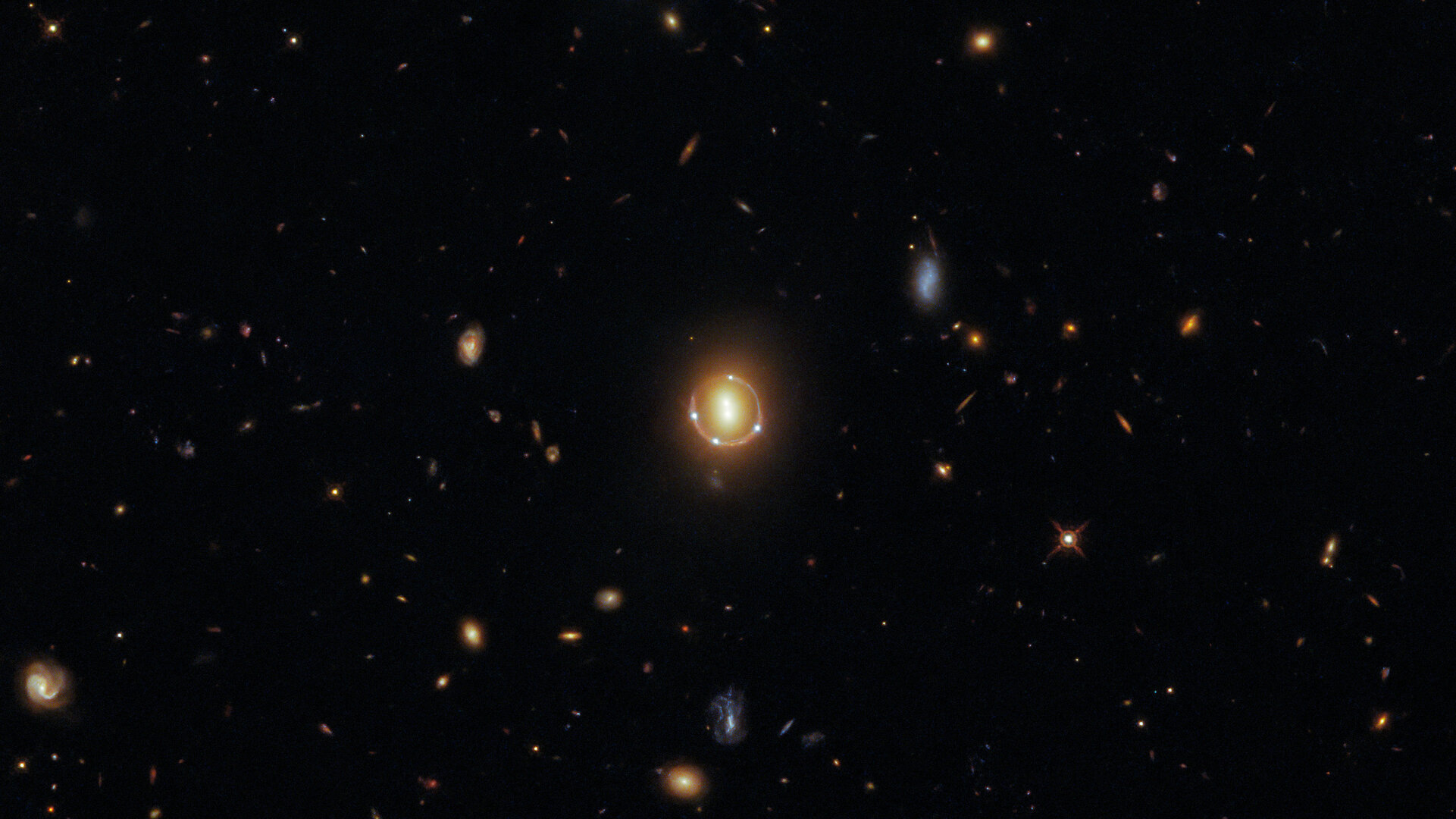A stunning new photograph from the Hubble Space Telescope shows a nearly perfect Einstein Ring, an effect caused by gravitational lensing. This is one of the most complete Einstein Rings ever seen.
Gravitational lenses occur when a massive object, such as a galaxy, is aligned directly between Earth and another massive object even farther away. Einstein predicted that gravity could bend light, and this image is a wonderful example of how gravity from foreground objects causes a deflection of light from background objects, forming a ring of light.
In this case, it’s not just one foreground galaxy and one background galaxy, but the gravity from two massive galaxies bending the light from a distant quasar, focusing the otherwise divergent light into a visible ring.
So why does this image show several points of light?
Video of this Einstein Ring. Credit: ESA/Hubble & NASA, T. Treu , Acknowledgment: J. SchmidtMusic: Stellardrone – Stardome
As you can see, clustered at the center of this image are six luminous spots of light, four of them forming a circle around a central pair. Hubble data also indicates that there is a seventh spot of light in the very center, which is a rare fifth image of the distant quasar. This rare phenomenon is caused by the presence of two galaxies in the foreground that act as a lens.
The Hubble team says that the central pair of galaxies in this image are genuinely two separate galaxies. The four bright points circling them, (and the fainter one in the very center, which is really hard to see) are actually five separate images of the single distant quasar, called 2M1310-1714.
The two foreground galaxies have such an enormous amount of mass that they cause the fabric of space to warp such that the light travelling through that space from a distant object is bent and magnified in such a way that the image shows multiple magnified images of the far-away source.
Our friend and colleague, Dr. Pamela Gay, loved this image too:
“This spectacular image was captured by Hubble’s Wide Field Camera 3 (WFC3), which was installed on Hubble in 2009 during Hubble Servicing Mission 4, Hubble’s final servicing mission. The WFC3 was intended to operate until 2014, but 12 years after it was installed it continues to provide both top-quality data and fantastic images, such as this one,” says the Hubble Team.

 To position the telescope at the sun's gravitational focal point would mean getting out to about 51 billion miles from Earth. The payoff would be immeasurable with images of continents, oceans and cloud formations on planets light years away!
To position the telescope at the sun's gravitational focal point would mean getting out to about 51 billion miles from Earth. The payoff would be immeasurable with images of continents, oceans and cloud formations on planets light years away!